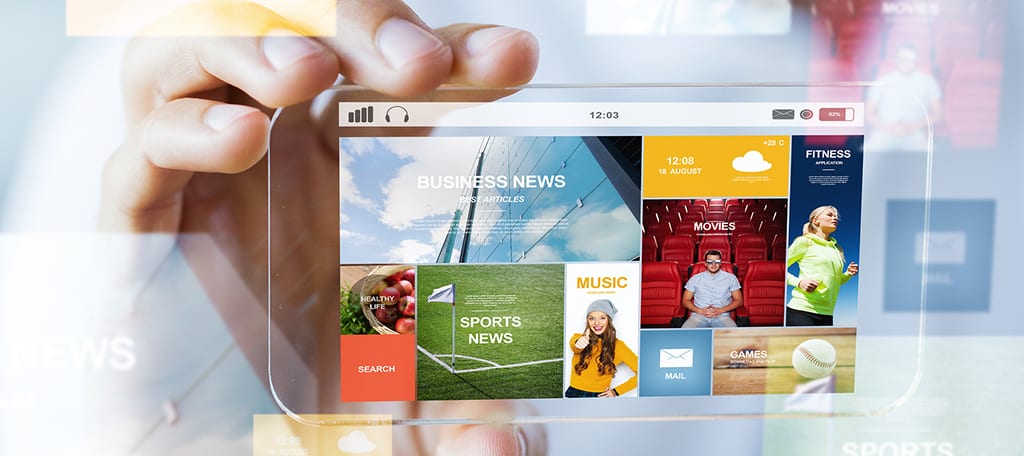
Social media landing pages come in all shapes and sizes. Some of the most effective are those which are specifically tailored to the social hub. Unfortunately, not everyone has the best strategy when it comes to creating these online connections.
So, what can be done to improve your social landing page’s performance?
What is a Social Media Landing Page?

A social media landing page is virtually the same as a regular landing page. The only real difference is these are webpages that are designed to be extensions of a social link.
Instead of traffic coming in from a banner or a pay-per-click campaign, visitors click links on social media posts to visit the content.
The purpose of a landing page is to inspire an action from the visitor. This can be opting in for newsletters, signing up for webinars or simply selling a product.
However, it takes a bit more than just slapping up a button and asking people to click it.
I’ve seen many landing pages that just didn’t have enough effort to convince me to purchase a product. As a result, I moved on, as many like-minded people did, I assume.
Here are 10 things you need to avoid if you want to create a successful social media landing page.
1. One-Size-Fits-All Templates

Not all template designs and layouts are going to be efficient in every scenario. While you may be tempted to use a landing page template, it may indirectly lead to a loss of conversions.
You may still have a few people who will interact with the page, but it may be less effective than what you’d expect.
Some landing pages will be filled with various keywords in order to attract an audience. This is not necessary. In the social media landing page, people are visiting the content thanks to links within the post.
For instance, someone could click on a Facebook link and be directed to your website’s landing page.
Some of the best landing pages I’ve seen were designed with a completely different layout. They feel more like extensions of the social media profile than simple advertisements.
Everything from the color scheme to the types of fonts used, it’s all relevant to deliver something that keeps the attention of the audience.
One of the best ways to determine the success of a landing page is to perform split-testing. This is when you create two or more similar landing pages with different layouts to see which one works best in terms of conversions.
2. Ignoring Your Target Audience

One problem a lot of business owners have, both online and off, is forgetting who the target audience is. A lot of these owners will develop sites, social posts and landing pages according to what they want to see.
You want to focus the attention on what your audience wants to see, not what you like.
The best developers will take into consideration a lot of data about their target audience. Colors, images, fonts and even readability levels can make all the difference in a landing page’s conversion rate.
When you start alienating your customers, you lose sales. It’s that simple.
By keeping tabs on what your fans and followers interact with the most and how the site performs in Google Analytics, you can build the best social media landing pages. The audience will guide you; all you need to do is listen.
3. Forgetting the Imagery

When creating a social post with a link to the landing page, don’t forget to include an image. Adding graphics has potential to more than double your traffic.
For instance, Facebook posts with an image experiences 2.3x more engagement than posts without.
Content that is more visual is often more likely to be shared as well. This means a good picture accompanying a link to your landing page has a greater chance of being delivered to far more people than just who is following your profile.
The important thing to remember is to keep the image relevant to the post and landing page. If it seems off, it may have far less of an effect on your audience.
It’s OK to demonstrate creativity and being artistic in the image as long as it is relatable to the content.
Be unique with images on social media and on the landing page. Stock photos are helpful, but original ideas are often the best. I know not everyone has experience as a photographer, but there is something to be said about originality.
4. Remember, Mobility Matters

More than 3.8 billion people are active on mobile social media in the world. That is just over one-third of the entire population of this planet. As a result, you need to make sure the landing pages are designed for hand-held devices.
This means everything from optimizing graphics to minifying JavaScript is beneficial.
Mobile devices are abundant, and it only makes sense to use webpages that are friendly to these units. Luckily, content managements systems like WordPress make mobile responsiveness easy with a couple clicks of the mouse.
Otherwise, you need to focus on delivering a landing page that is perfect on a much smaller display.
It’s not just the content and design which requires mobile friendliness, either. Users need easy-to-tap buttons within the content as well. If a user on a smartphone cannot operate the site easily, he or she is more likely to abandon the page.
It’s funny how large buttons in 2001 web design were replaced by navigation links only to be brought back for mobile interaction.
5. Creating Too Much Content on a Landing Page

One of the biggest problems I see on a lot of landing pages is that of too much content.
If I have to scroll more than two or three times just to get half-way down the page, I give up and close the browser tab. You don’t need a full novella to improve conversions.
Let’s say you create a landing page for your Twitter post. Users are already accustomed to short text, as apparent in 280 characters of Twitter’s post limit.
Linking to a 2000 word page can easily frustrate a large portion of those who click the link.
A landing page should be a description about what is being offered and why the visitor should want it. Anything more is just filler, which can disassociate the guest with the product in question.
Another element you should keep in mind is navigation. Most successful social media landing pages have very little in terms of linking. That’s because you want to keep the visitor on the page until he or she fills out a form, purchases a product or whatever else your campaign requires.
6. Forgetting Testimonials and Reviews

Testimonials from customers have a high-effectiveness rating of 89%. This means they work exceptionally well at improving conversions.
Consumers are more apt to believe the suggestions and experiences of other buyers as opposed to brand statements.
One of the biggest components for marketing of any kind is that of building trust. However, much of this trust is derived from the experiences of others.
What better way to promote a product or service than displaying the praises of past customers?
What about overly negative reviews? You need to include these elements as well.
If you try to hide the bad comments and reviews, people will think you’re actively trying to deceive them. As a result, the consumer base will more than likely not trust your company.
Besides, addressing past issues and showing consumers your business works to improve itself is a very redeeming quality that often helps businesses grow.
7. Going Away from Brand

Being a fan of a product or service other than the one you provide is not a bad thing.
However, adding it to a landing page when it has nothing to do with your business or industry is. It creates a dissociation with the business and may lead to confusing customers.
How often do you decide to go to a French restaurant looking for a Mexican chimichanga? It’s all about keeping with your niche industry if you want to be successful.
Adding a random element on the landing page may receive a few conversions, but it’s ultimately a waste of time and money.
The biggest problem with going away from the brand is the return on investment. People who are interested in your brand are looking for specific products and services.
Adding something that is unrelated has less of a chance for conversions because it’s not what your target consumer is looking for.
8. Including Multiple Offers

A social landing page should focus on a specific offer. You want the attention to be solely on one specific item or service. Adding a second or a third component takes away from the primary goal and may distract visitors from your objective.
In fact, multiple offers on landing pages decrease conversions by 266%!
Multiple offerings on a landing page take away from the value of it. It looks more cluttered and is distracting to visitors. You want people focused on the primary objective of the webpage.
Your social post ignited the fire in them to click the link. The content on the landing page should stoke that fire.
You should have one goal of the landing page. If it’s a 20% discount on a specific item, that should be the focus. There is nothing wrong with having several active landing pages for different offers.
In fact, a lot of successful businesses have multiple pages each with their own focus.
9. Discrediting Video Use

Adding a video to your social media landing page design can lead to an 86% increase in conversion rates. This is because video content is the most utilized parts of the Internet and consumes the most bandwidth.
Embedding video doesn’t take a great deal of effort. For instance, YouTube gives you the HTML code to paste directly into your page to show the video. All it takes is development of the content.
A video specifically created to accentuate the offer on the landing page needs to have focus on that product or service. It should be succinct and informative. Too many people will create long and drawn-out video content that often drives consumers to abandon the site.
In other words, you don’t want the video to be as long as a television sitcom.
You don’t need a large production budget or state-of-the-art camera equipment to create a good video. A lot of successful people started off with nothing more than a webcam and free editing software.
It’s the message you provide that will make the most impact in a landing page video.
10. Being Unrealistic with Expectations

Every marketer relishes in the thought of creating a social post that goes viral. The truth is you should focus more on engagement rather than creating something you believe to be “amazing.”
It reduces the problems that could arise from trying too hard.
While you can put effort into making amazing viral content, be realistic with your expectations. Don’t assume that something you create will be the next biggest wave across Facebook or Twitter.
Monitor how each social landing page is performing and build strategies for improvement. Through trial and error, you will have an idea regarding what your target audience wants to see.
Eventually, you may hit something that performs exceptionally well. Just don’t expect your first landing page to be something that drives in millions of customers.
The best you can do is to create sharable campaigns, focus attention on social sites where you have an audience and be conversational. After all, people are on social media to be “social” with each other as well as brands.
If you create a landing page that winds up going viral, then be excited for its success.
Don’t expect it to happen overnight, though.
Design Something That Engages
A social media landing page design should feel like an extension of the brand from one platform to the next. It needs to have a good flow of content if you want to keep the reader’s attention. Keep your visitors engaged and deliver something that is recognizable of the business.
The fans are already interested in the bait of the message. Now make them take the hook.
